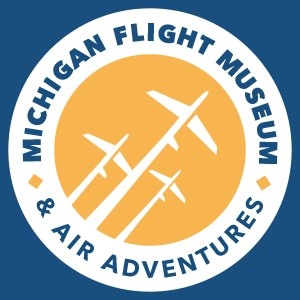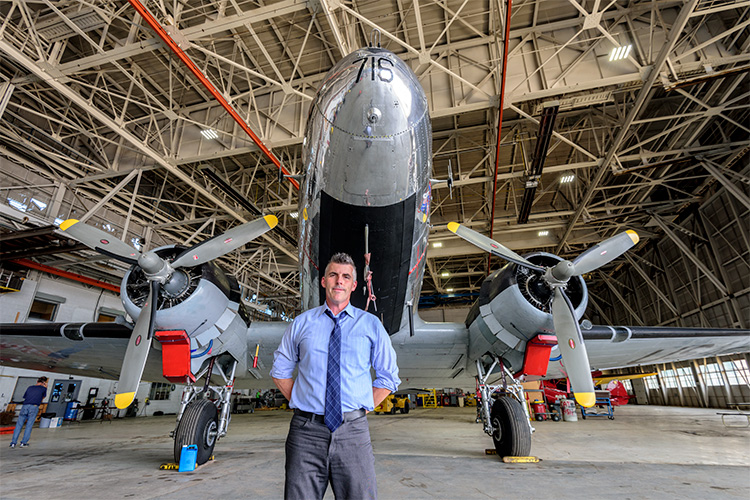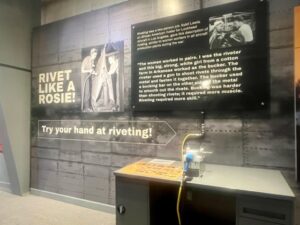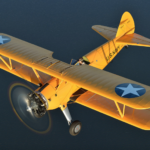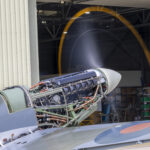Whenever a storied aviation museum renames itself or even modifies its logo, there is inevitably a period of hair-pulling and ALL-CAPS RANTING on social media; usually by a minority of commentators, albeit a very vocal minority. Some people just find change very difficult, which is totally understandable.
However, no organization undertakes such changes without considerable forethought, nor without clearly defined reasons for doing so. The motivations that drive members of the public to visit museums – or to help fund them – involve an ever-changing set of conditions. Any museum that fails to update its operations to meet those conditions is destined to falter, or even to fold. The Yankee Air Museum’s recent rebranding as the Michigan Flight Museum & Air Adventures is a perfect example of this dilemma which so many aviation museums must address in the modern era. It is a case of ‘adapt-and-thrive’ or ‘flail-and-fail.’
Kevin Walsh is the president and CEO of the newly-renamed Michigan Flight Museum, and our publisher, Moreno Aguiari sat down with him last week to discuss the organization’s recent moves and what their intentions are for the future. The following is a transcript of their conversation [edited for clarity]. We hope our readers find it illuminating…
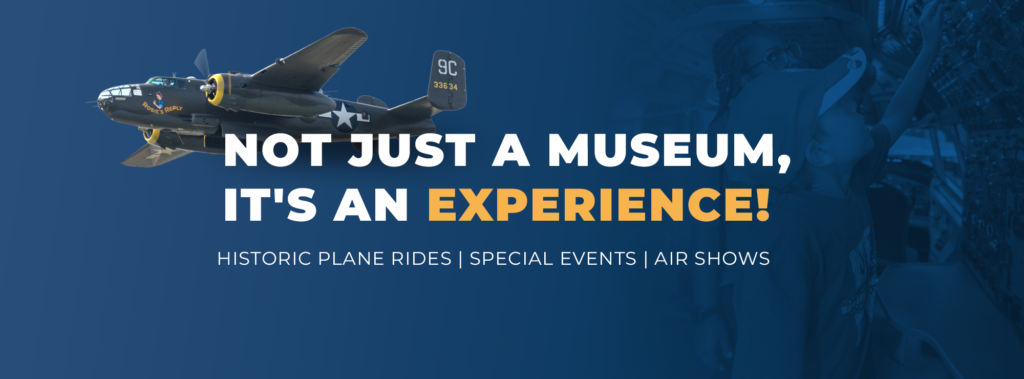
———————————————————————————————————————
MA: Thank you for taking the time to talk to Vintage Aviation News. Given the museum’s recent rebranding, perhaps you could walk us through the process of making these significant changes.
KW: It all started with a five-year strategic plan we put together in 2019. And obviously, part of this plan involved rebranding to better reflect who we are today. It’s that simple.
We are a flight museum; we fly and we have air adventures here… our fancy word for warbird rides or vintage aircraft rides. We just felt that the word “flight” was something that’s been missing. It also resonates more with the general public. That’s another piece to the puzzle. “Museum” resonates very well with the general public too.
And (of course) we are based in Michigan. When [an organization] rebrands, there’s sometimes an attitude to be bigger or make a name that you grow into, but that’s actually the wrong path to go down. So calling ourselves the National Flight Museum or the American Flight Museum or whatever, wouldn’t work, because that’s not who we are. We are Michigan’s flight museum… so Michigan Flight Museum and Air Adventures [seemed a natural fit].
Obviously, we also wanted to make something that is very attractive to the general public, and this is where we have to be honest with ourselves. [As it happens] aviation enthusiasts comprise just .01% of the people who attend our institution. We are attracting from the Metro Detroit area and beyond Southeast Michigan… The people who come in here – the spectators, the guests, et cetera – that come to our events or come to our museum are the general public and this is who we’re supposed to be interacting with. So if your name doesn’t reflect who you are, it can be a problem.
The name Yankee Air Museum has served us very well – for 43 years it has served us very well – but then you get questions such as “What is an Air Museum?” which adds to our problem. Did you know that one of the most searched-for terms online right now is not “air show.” When people are looking for air shows, they’re looking up the words, “airplane show.” This is a reflection of the times… So we have had to step out of our enthusiasts role and ask ourselves, “Okay, how do we attract the young families, and how do we attract the general public and bring them to our institution?” We have to keep things simple so that they know what they’re coming to. Because …we can get all wrapped up as enthusiasts. We can get all snarled up in our own thoughts and feelings, and forget what it’s like for those [outside our small group, and what might motivate them to visit us].
MA: So you mentioned having a five-year strategic plan. This really shows the thought that the museum’s leadership has put into the organization’s future. Most museums don’t seem to think this way – to look beyond the day-to-day operations towards what may be on the horizon. So that leads me to ask you how the vintage aviation/aviation museum community and industry has changed over the past few decades. In other words, how have we changed from where we used to be, when all you needed to say was “Come out and look at my beautiful B-17 or B-25,” or whatever, to where we are now? What is needed to keep a museum’s doors open?
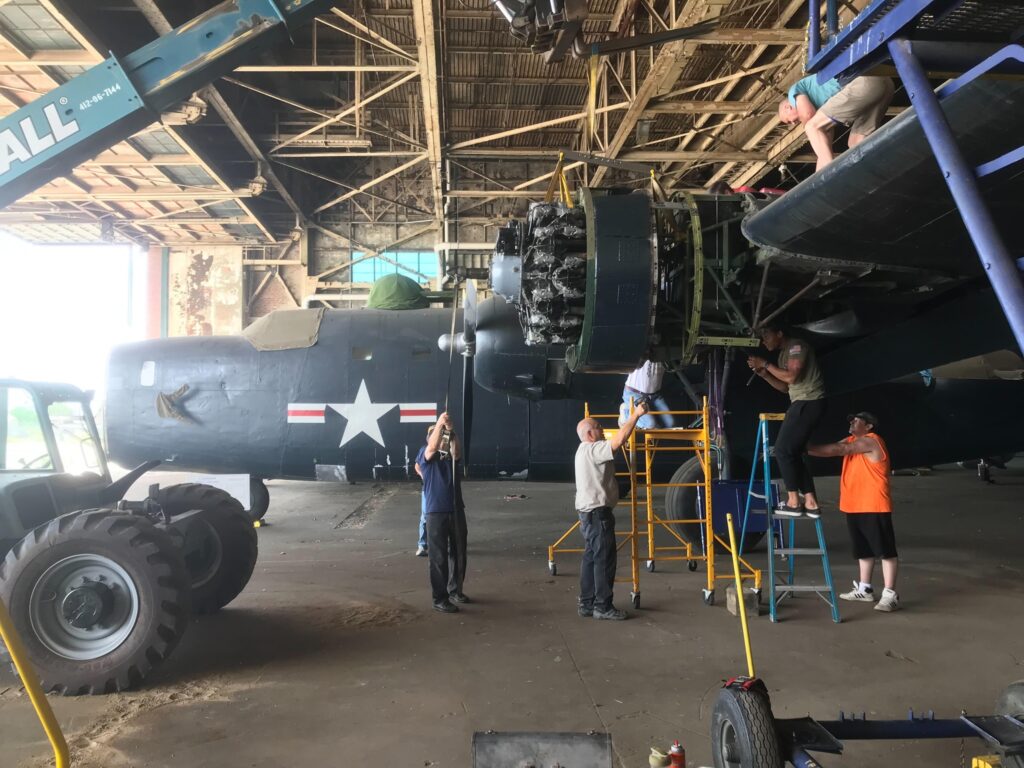
KW: I am so glad you asked this question. I mean, I’m ecstatic that you asked this question. The “put-plane, place placard” method of old does not appeal to the modern consumer. And that’s where museums are hopefully waking up now and saying: “Okay, our mission doesn’t change. Our mission is still to educate, inspire, preserve – all those good things – but we have to put it in a different package now. We have to brand it differently, and the experience has to be different.” The problem now, with… and when I say problem, you can put that in quotes, because it’s all good for dorks like me. I’m an aviation dork. I love the ‘put-plane, place placard.’ I’ll read them all. I’ll spend hours just looking at static airplanes, and I’ll appreciate the difference between the B-17E-model, or an F-model, or a G-model – all that stuff. But today’s public has information coming at them so quickly. Everything’s so stimulating, and so interactive, and so digital now, and that’s part of the experience here.
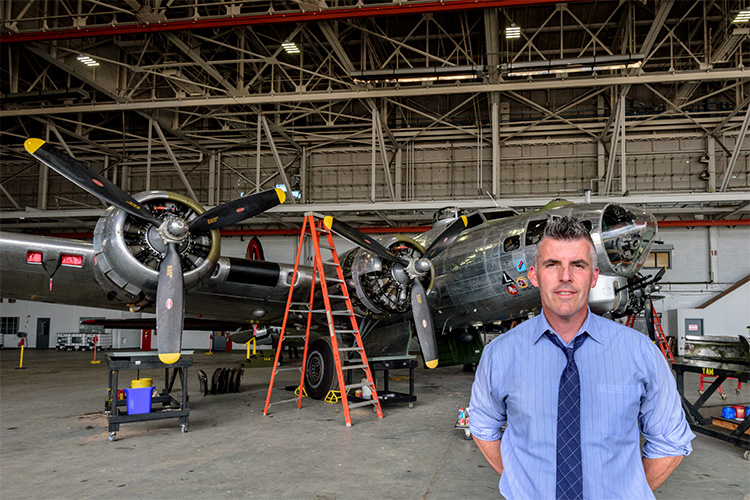
When we got the Dauntless from the United States Navy, we had a choice to make. We wanted to talk about the historic and very important aircraft carrier training on the Great Lakes – and in particular Lake Michigan – during World War II. We out-trained and we out-produced our enemies in World War II, as you know, and part of out-training our enemies involved, obviously, the carrier training for thousands of Navy and Marine Corps aviators [on and around Lake Michigan].
So we get a Dauntless, and we could [either] have restored it statically and put a placard in front of it [like most museums do]. Or we could take it exactly the way it was – the way it had been submerged underwater – and tell the story about the perils, the difficulties, the challenges of [carrier training]. We could also allow the public to ‘fly’ in simulators – to sit down and see how hard it is… and the skill sets required to be a carrier-qualified pilot.
We get them in an SBD simulator and have them put in proper power settings, flight control settings, et cetera, and see if they can land on the deck. It gives them a whole new appreciation for the aircraft and the history of its pilots.
So there’s the restoration route, where we return the Dauntless to factory-fresh condition and put a placard in front of it. Or we could create an underwater scene that’s very dramatic. The airplane is unrestored and, as you know, preservation is more important now than restoration in a lot of cases. And so that’s the new vision. I see so many museums starting to head that way now, and it’s exciting, because we know we’re going to be able to continue to survive into the future.
Traveling the same old route is just a path to… obsolescence, really, if you don’t adapt and create dynamic programs and exhibits. In our ‘Women Answer the Call’ exhibit, which features the Rosie the Riveter story, visitors get to actually buck a rivet and see how good they are using compressed air and a bucking bar. So when they walk away, they don’t just read a placard about Rosie the Riveter, they actually get to feel some of what Rosie felt as a riveter.
Now, I always hate to put Rosie in a little box as just a riveting specialist. Rosie is a big, big term for women in the industrial workplace in World War II and the success that they achieved. [Even though] there were no wars physically fought where they were… a war was won because of them.
But the big takeaway is… the biggest thing is, you had better have an experiential takeaway… I think that’s probably what I’m trying to get to – those two words, ‘experiential takeaway’. When you have that, you score. That’s the goal, because now your museum has become memorable to a visitor. And by the way, you’re repeatable, and there’s the other piece to the puzzle. How are you memorable and how are you repeatable? So that’s a big thing for us too… And by the way, we don’t have the answer yet. We are struggling with it just like everybody else, but we’re trying things. We’ve had successes and we’ve had failures, but I’ll tell you what, [if we go down] we’re going to go down swinging.
Never go to the plate and just let the pitch go by, because there’s no other way.
So we had five basic things [in our five year strategic plan]. We put it together and said, “Within the next five years, let’s achieve these five things to improve the overall experience, health and longevity of the museum.” So the rebranding was one. Turning up – or dialing up – the guest experience was another, which we’ve done with [the SBD] in our exhibit ‘Deep Landings’, and learning how we can resonate with guests that come in to the museum? What other air adventures can we offer to our guests?
Financial sustainability is another objective. We continue to look at our fundraising and how we achieve it. We’ve brought that all in-house now. And then of course, youth was another piece to this five-year strategic plan. How do we get more young people involved with the museum? That is vitally important. Because again, as you know, the idea of passing these skill sets along [to younger generations] is super important because they’re not being taught; radial engines are not taught [in trade schools]. You don’t even learn how to do sheet metal. I am just like, “Oh my gosh.” So now we’ve moved from, ‘don’t worry about the powerplant’ to don’t worry about the airframe. And everything is now compartmentalized components – everything’s throwaway, et cetera.
So it’s even more critical that we have more youthful team members around here… and partnerships too. One of the big things that we did was we joined with the Ann Arbor Hands-On Museum and the Leslie Science & Nature Center – they are two renowned institutions here in the Michigan area – and we created a program called Unity and Learning. So the three of us together run educational programs for students in different school districts. And we have thousands of students who come through the museum each year now because of the power of having three cultural institutions working together and teaming up with educators in programming and what they can experience. And then also the funding for it, because there are hardly any schools which have funding for buses or programs, or to pay an educator to teach them about STEM.
So those are the five things – and, proudly, we’ve checked off all of those boxes. We are about to start heading this fall into the next five years – so we’re super, super excited. When [the news] first came out, a lot of people said, “Oh, hey guys, what are you doing?” But the feedback overall has been very positive. There will always be the naysayers, of course; the armchair experts can do their thing. But that’s not what we are here for. We’re here to make a difference and to see thousands of kids and tens of thousands of people a year through our events and museum.
And when you actually implement the changes we’ve done, [you find that] they’re not really massive changes. They are just tweaks to make yourself that much better. We’re already good, but let’s become even better!
——————————————————————————————————————————————
Vintage Aviation News would like to offer its thanks to Kevin Walsh for taking the time to discuss his organization’s recent changes. We are confident that their carefully thought-out plans will help them adapt successfully to the ever-changing challenges that every museum faces over time. For more information visit Michigan Flight Museum & Air Adventures
